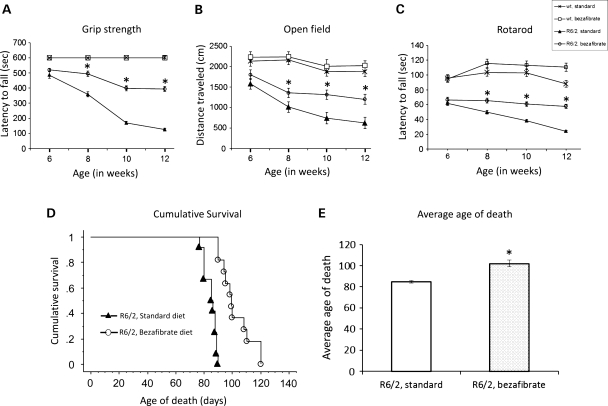Figure 2.
Bezafibrate improves the phenotype and extends survival in R6/2 mice. (A) Grip strength analysis of R6/2 mice and their wild-type littermates on bezafibrate diet. There is a rapidly progressive reduction of muscle strength that is improved in bezafibrate-treated R6/2 mice when compared with the R6/2 mice on a standard diet. *P < 0.001, when compared with the R6/2 controls (n = 8 for each genotype, bezafibrate or standard diet and bars represent SEM). (B) Measurement of exploratory activity in R6/2 mice at different ages. R6/2 mice are significantly hypoactive when compared with their wild-type littermates (*P < 0.001, n = 8). Bezafibrate significantly restores normal activity and exploration. (C) Assessment of motor coordination in R6/2 mice on bezafibrate diet. R6/2 mice showed progressive, robust deficits on rotarod, with a significantly reduced latency to fall starting at 6 weeks. Bezafibrate-treated mice remained on the rotarod longer than the untreated R6/2 mice. (D) Kaplan–Meier survival plot of R6/2 mice on the bezafibrate diet in comparison to R6/2 mice on a standard diet. No mice in wild-type groups (bezafibrate or standard diet) died in the observed time frame (n = 10 in each group). (E) Graph showing average age of death of R6/2 mice on the bezafibrate diet or a standard diet. *P < 0.05 (n = 10 in each group).

